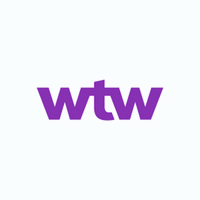How to provide healthcare support to employees to beat NHS delays
With the pressures faced by the NHS and the consequences for patients continuing to dominate news headlines, the public healthcare prognosis is far from positive.
According to recent figures, around 400,000 referred patients have been waiting more than 52 weeks for treatment despite an 18-week target – a figure that has not been met since 2016.
And by September 2022, the waiting list for consultant-led hospital treatment rose to more than seven million.
For businesses, the consequences can have a significant impact, both operationally and financially, and forward-thinking organisations are already prioritising health action plans.
A survey by Willis Towers Watson (WTW), for example, revealed that 68% of employers said they will needed to expand healthcare cover. The 2022 Emerging Trends in Healthcare Delivery Survey also found that more than 93% of employers felt NHS waiting lists will remain a significant issue for the foreseeable future.
Addressing the issues that have arisen is a matter of urgency for employers. One way of achieving this is to meet the health needs of employees through avenues less reliant on the overburdened NHS. Below, we examine some of the options.
1. Taking the private path
In the current climate, private medical insurance (PMI) has a high value in offering access to diagnosis and healthcare treatment.
WTW’s 2022 Global Benefits Attitudes Survey (GBAS) saw a 10-year peak in the number of employees who said health benefits are key in attracting and retaining staff. And a more generous healthcare plan was the number one physical health benefit preference.
With gains for both employer and employee – especially earlier detection and treatment of potentially life-threatening conditions – PMI can reduce the length of absence and associated costs to an organisation.
Employee engagement, commitment and loyalty can also be improved by PMI, and it supports the recruitment and retention of talent.
When designing a PMI scheme, it is important to recognise that its scope should cater for diverse needs and expectations, as well as the general needs of a workforce. It should align with lifestyle, population, age and market trends, and provide for all gender identities, abilities and disabilities.
2. Exploit EAPs
Mental health issues are one of the leading causes of employee absence.
Employee assistance programmes (EAPs) are often under-used, but can offer confidential support from trained mental health professionals, in-person or via 24/7 telephone helplines.
3. Turn to technology
‘Artificial Intelligence’ doctors capable of making diagnoses using data algorithms are being developed. This exemplifies the increasingly important role of technology in healthcare.
Many employers have already introduced a digital GP service, which can help ease the problems associated with lengthy waits to see the doctor. In WTW’s 2022 GBAS, 59% of respondents said they experienced shorter waiting times with the digital GP and 53% said they found them more convenient.
GBAS further revealed that employees who use health condition apps felt more likely to get the support they need to manage their conditions. These ranged from musculoskeletal pain, digestive issues and high blood pressure to diabetes and fertility and reproductive health issues
More than one-third (36%) of employees said that such apps and wearables should be a core part of benefits offered by employers.
Wearable tech can also be used to communicate and help lower the risk of disengagement.
4. Go pro-active
Prevention is always better than cure. Health screenings, online risk assessments and health questionnaires can all lead to early identification of health issues and potential challenges.
When designing health plans, key indicators, such as the number of smokers within a workforce and levels of obesity, can be used to inform areas of focus. Through health data, companies can implement relevant and preventative initiatives, such as onsite fitness classes, which can offset costly debilitating and long-term illnesses.
5. Invest in cash plans
Another way organisations can take preventative action is through cash plans.
Historically, these provided cashback to employees for healthcare costs attached to optical, physiotherapy and dental needs. Their scope has since been widened to include a greater range of health services and preventative benefits.
Health cash plans can encompass screening for such illnesses and conditions as cancer, heart disease and diabetes. Alternative therapies and complementary health, too, can be included.
Communication is key
The challenges of an ageing workforce, lengthy NHS waiting times and cancellations of routine procedures and non-urgent appointments are unlikely to abate in the short-term.
The treatment delays employees face may not only prolong physical suffering, they can also affect mental health. This could have a detrimental impact on businesses, with productivity and operations being affected by prolonged absences.
For companies, communication is a key way to address the challenges.
Valuable benefits go unused because employees are either unaware of them, are overwhelmed by too much information, or are fearful of lack of confidentiality. The onus is therefore on employers to allay their fears.
However, there is little value in signposting and sharing what benefits are available and how they can be accessed if the benefits are not relevant. This is why employee input is vital.
Although many businesses are keen to obtain such insight, the challenges can be off-putting. One solution is to turn to organisations with extensive research capabilities, such as WTW.
With more than half of respondents to WTW’s 2022 GBAS stating that health care programmes are a key influencer in remaining with their current employer, good health benefits could be the perfect prescription.
Supplied by REBA Associate Member, WTW
WTW is a leading global advisory, broking and solutions company.








